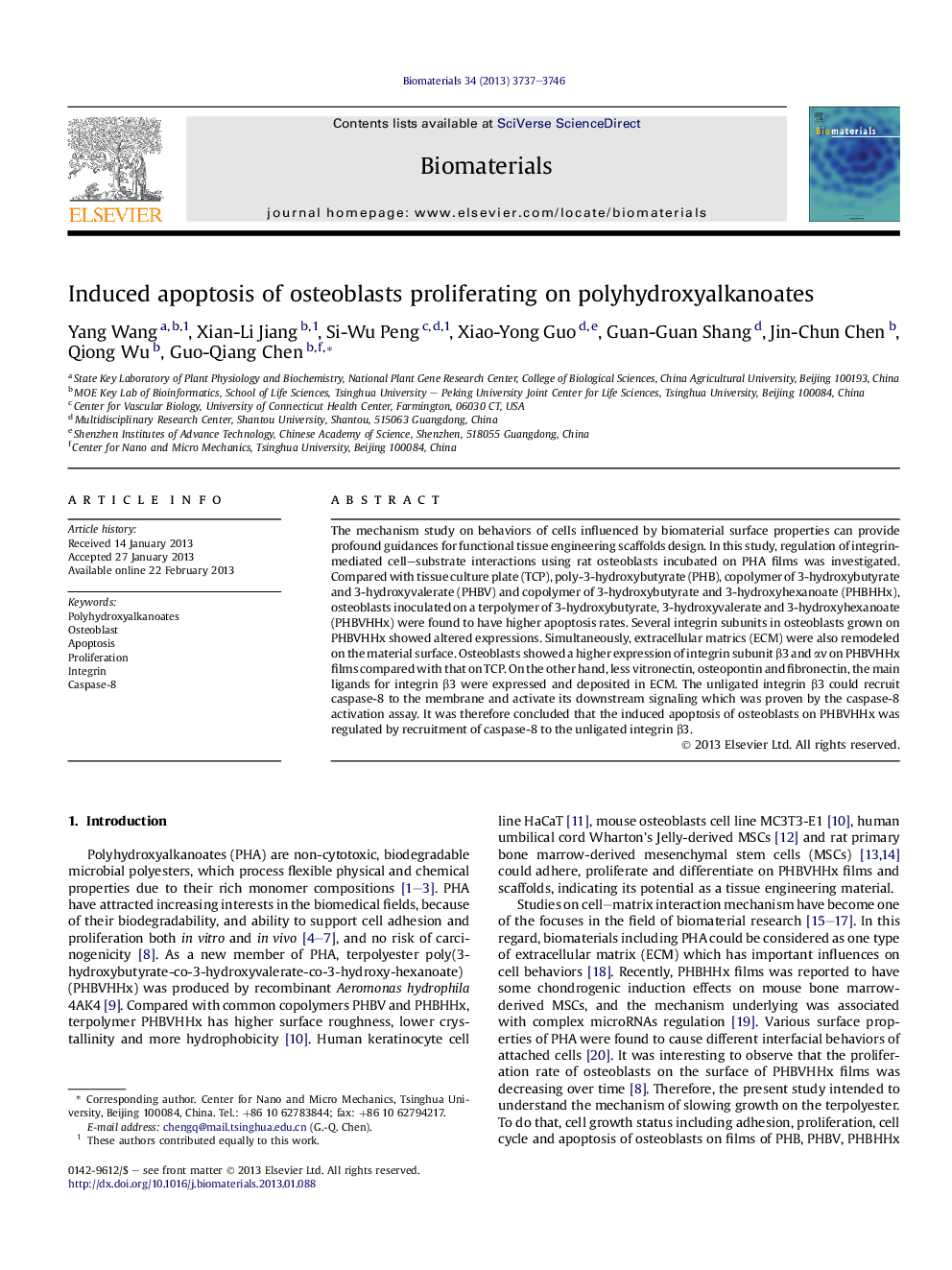| Article ID | Journal | Published Year | Pages | File Type |
|---|---|---|---|---|
| 10228735 | Biomaterials | 2013 | 10 Pages |
Abstract
The mechanism study on behaviors of cells influenced by biomaterial surface properties can provide profound guidances for functional tissue engineering scaffolds design. In this study, regulation of integrin-mediated cell-substrate interactions using rat osteoblasts incubated on PHA films was investigated. Compared with tissue culture plate (TCP), poly-3-hydroxybutyrate (PHB), copolymer of 3-hydroxybutyrate and 3-hydroxyvalerate (PHBV) and copolymer of 3-hydroxybutyrate and 3-hydroxyhexanoate (PHBHHx), osteoblasts inoculated on a terpolymer of 3-hydroxybutyrate, 3-hydroxyvalerate and 3-hydroxyhexanoate (PHBVHHx) were found to have higher apoptosis rates. Several integrin subunits in osteoblasts grown on PHBVHHx showed altered expressions. Simultaneously, extracellular matrics (ECM) were also remodeled on the material surface. Osteoblasts showed a higher expression of integrin subunit β3 and αv on PHBVHHx films compared with that on TCP. On the other hand, less vitronectin, osteopontin and fibronectin, the main ligands for integrin β3 were expressed and deposited in ECM. The unligated integrin β3 could recruit caspase-8 to the membrane and activate its downstream signaling which was proven by the caspase-8 activation assay. It was therefore concluded that the induced apoptosis of osteoblasts on PHBVHHx was regulated by recruitment of caspase-8 to the unligated integrin β3.
Related Topics
Physical Sciences and Engineering
Chemical Engineering
Bioengineering
Authors
Yang Wang, Xian-Li Jiang, Si-Wu Peng, Xiao-Yong Guo, Guan-Guan Shang, Jin-Chun Chen, Qiong Wu, Guo-Qiang Chen,
